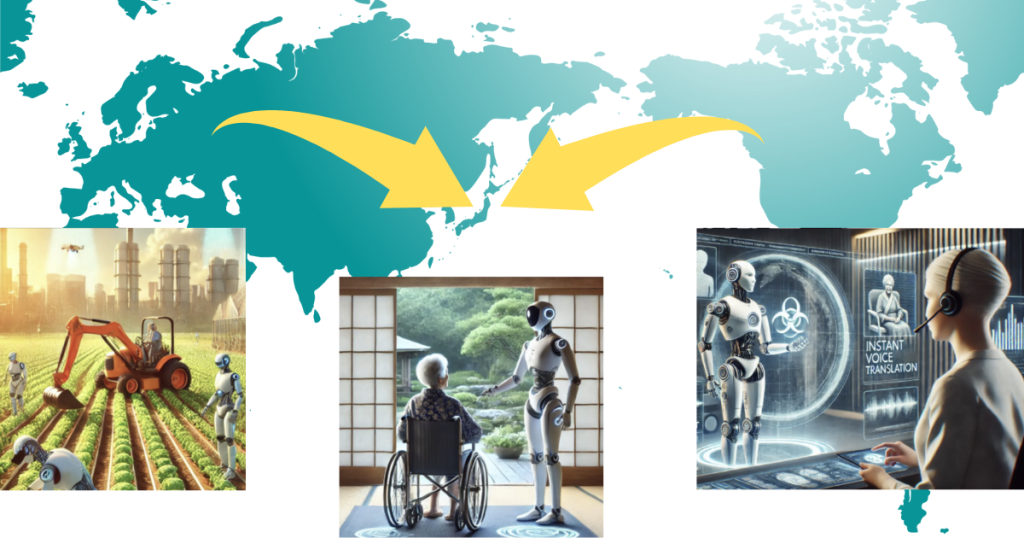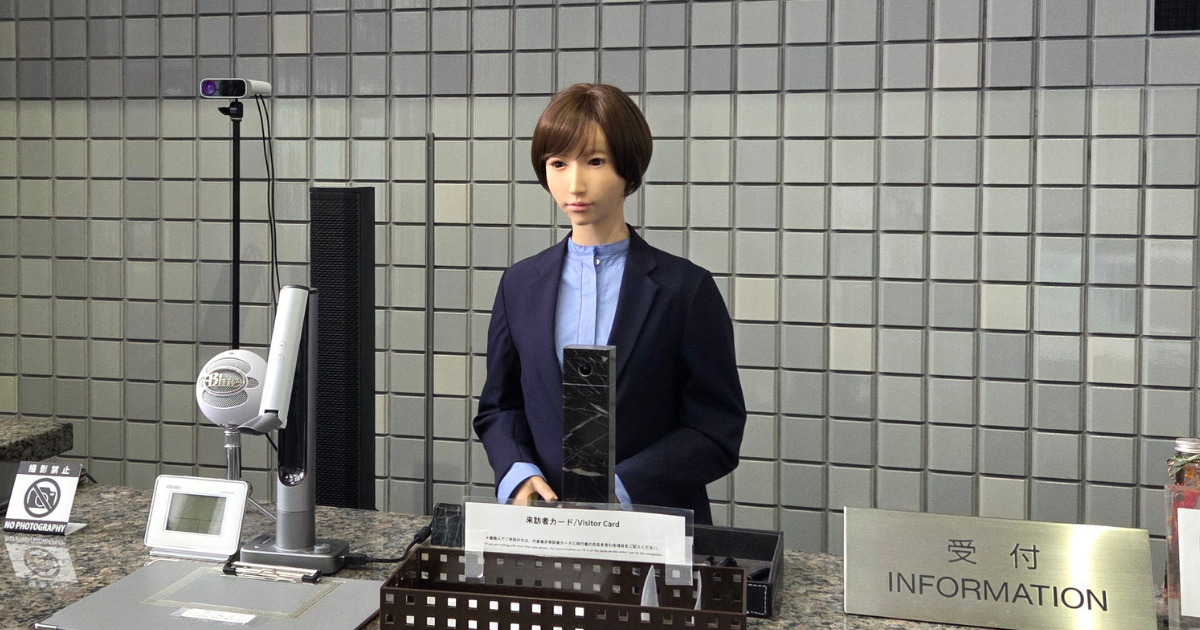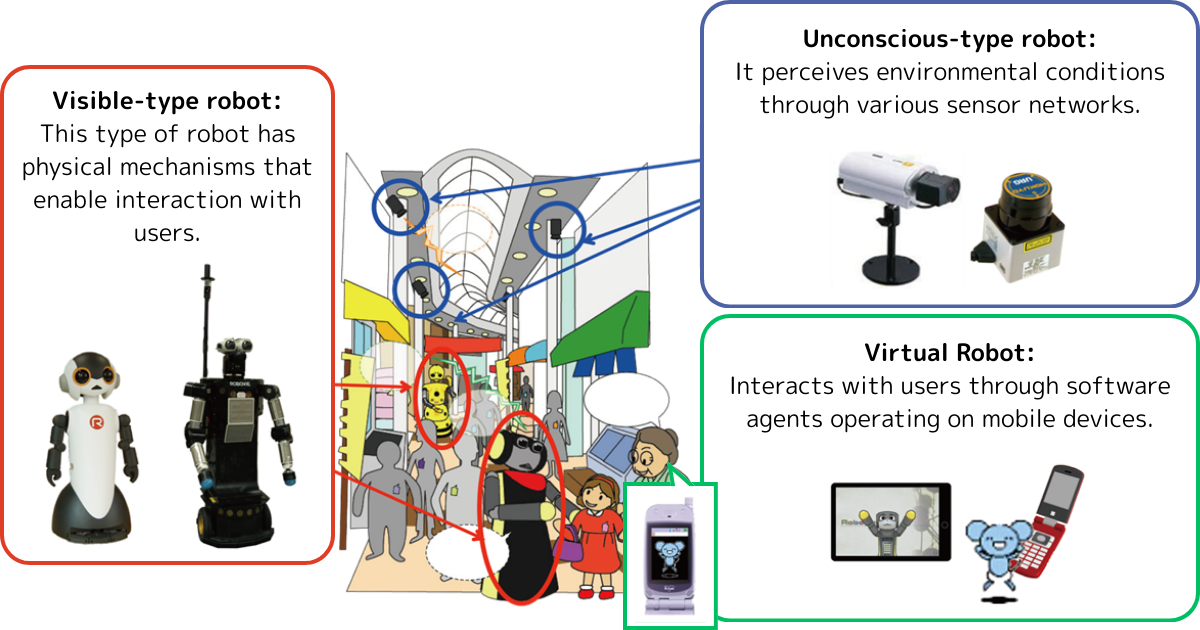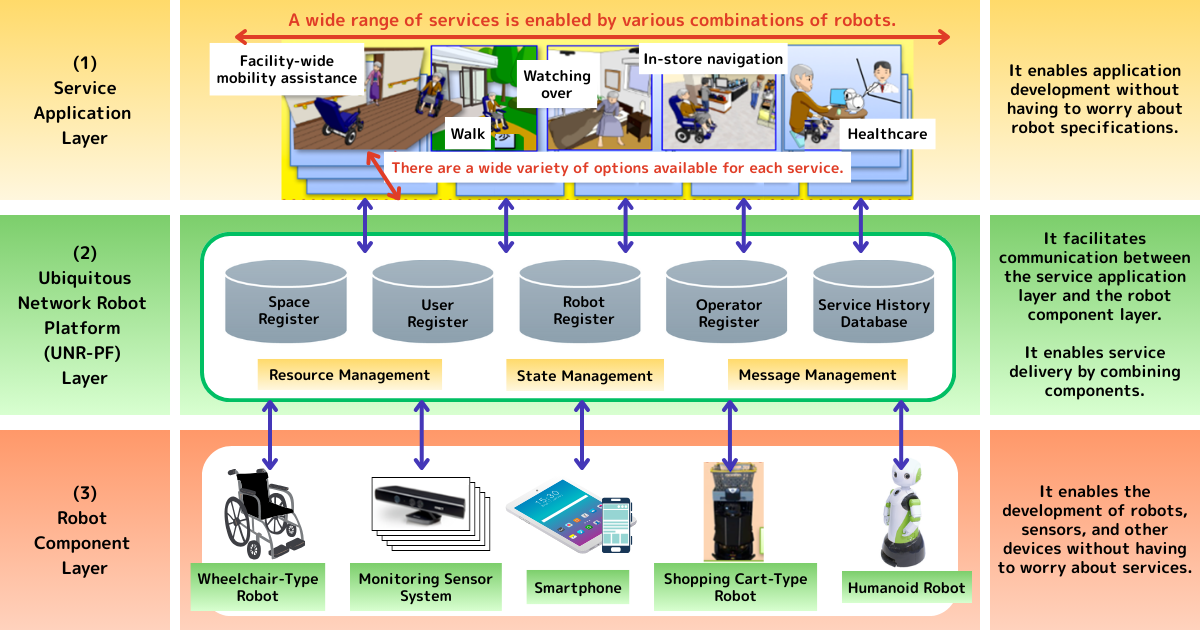Moonshot Goal 1:
Realization of a society in which human beings can be free from limitations of body, brain, space, and time by 2050.
As Japan faces a declining birthrate and an aging population, with concerns over labor shortages, it is crucial to enable people with diverse backgrounds and values—including those who need to provide nursing care, raise children, or are elderly—to participate in a variety of activities in accordance with their own lifestyles. Achieving a society in which people are freed from the limitations of body, brain, space, and time is the key to making this possible.
Through this R&D program, we aim to realize such a society by 2050 by advancing the research and development of Cybernetic Avatar (CA) technologies—a set of technologies often referred to as cyborgs or avatars—that expand human physical, cognitive, and perceptual abilities. This will be pursued while taking into account social norms and values.


Social Field Experimentation
As part of the social field experimentation of DIL’s research outcomes, ITB have the following three main initiatives.
1. Cybernetic Avatar
The Cybernetic Avatar (CA)—a tele-operated surrogate robot or CG agent—and its dedicated software platform (CA Platform) are being developed and socially implemented as part of the JST Moonshot R&D Project “Realization of a society in which human beings can be free from limitations of body, brain, space, and time by 2050. (Project Manager: Professor Hiroshi Ishiguro, Osaka University; since December 2020).
Specifically, we are developing a software and hardware platform (Cybernetic Avatar Platform) to conduct field Experimentation utilizing CAs and the CA Platform. In addition, we have established and are operating an Avatar Symbiotic Society Corporate Consortium to share information with related companies and to explore new business models together.
By enabling social participation through the use of CAs—tele-operated surrogate robots—we aim to address some of the challenges faced by individuals who have experienced difficulties in participating in society. As a demonstration of this concept, we have been conducting field experiment since August 2021, where our company’s reception services are carried out using CAs.

Reception Pilot Test
Avatar Symbiotic Society Corporate Consortium
* The Avatar Symbiotic Society Project is supported by the JST Moonshot R&D Program (JPMJMS2011).
2. Networked Robot Technology
Network robot technology allows robots and electronic devices, such as environmental sensors, home appliances, and mobile terminals, to collaborate via a network. This allows them to provide users with complex services that would be impossible for individual robots alone. Research and development outcomes include communication protocols and databases that enable this collaboration, as well as human-robot interaction technologies. The Intelligent Robotics Laboratory, the predecessor to the Deep Interaction Research Institute, developed this technology as part of Ministry of Internal Affairs and Communications-commissioned research projects: "Comprehensive Research and Development of Network-Human Interfaces" (FY2004-2008) and "Research and Development of Life Support Robot Technology" (FY2009-2012).
In an effort to implement network robot technology in society, we are developing network robot service solutions with companies based on these research results. We are also advancing the international standardization of communication protocols through organizations such as the Object Management Group (OMG).

Network Robot

Ubiquitous Network Robot Platform
3. Deep Interaction Technology
We are developing new products and services that utilize deep interaction technology. This technology is based on our accumulated research achievements and encompasses human perception in interactions between humans and machines. We are conducting related applied research through joint research and development with companies.
